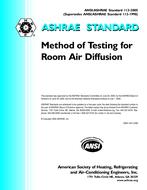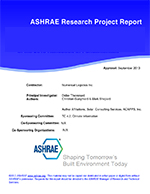In an effort to protect interior painted glass windows (not colorful stained glass) in medieval churches against climatic and mechanical attack, an additional glazing was installed on the exterior at a given distance to the existing glazing. To determine whether this action may threaten the paint in any way, various sensors were installed at specific places around one window each at the upper northern and southern windows of St. Mary’s church in Rostock, Germany, while general restoration work was in progress and the necessary scaffolding was available.
Hourly data of the 32 sensors were collected over one year and then supplemented by the climate data of a nearby national weather station. Collection of data will continue. The results of the measurements show that natural convection exists in the space between the glazings. This space is equipped with apertures at the bottom and top and ventilated towards the indoor climate, depending on the exterior temperature and solar radiation. Short-time condensation occurs at both sides of the interior glazing. After the test period, only a few microorganisms were found on the paint.
The investigation indicates that it is essential to ventilate the space between glazings with upper and lower gaps, but to the inside rather than to the outside (as is usual with ventilated facades). The outside protective glazing has to be airtight.
Citation: Thermal Performance, International Conference, 2010
Product Details
- Published:
- 2010
- File Size:
- 1 file , 5.5 MB
- Product Code(s):
- D-BUILDINGSXI-31


